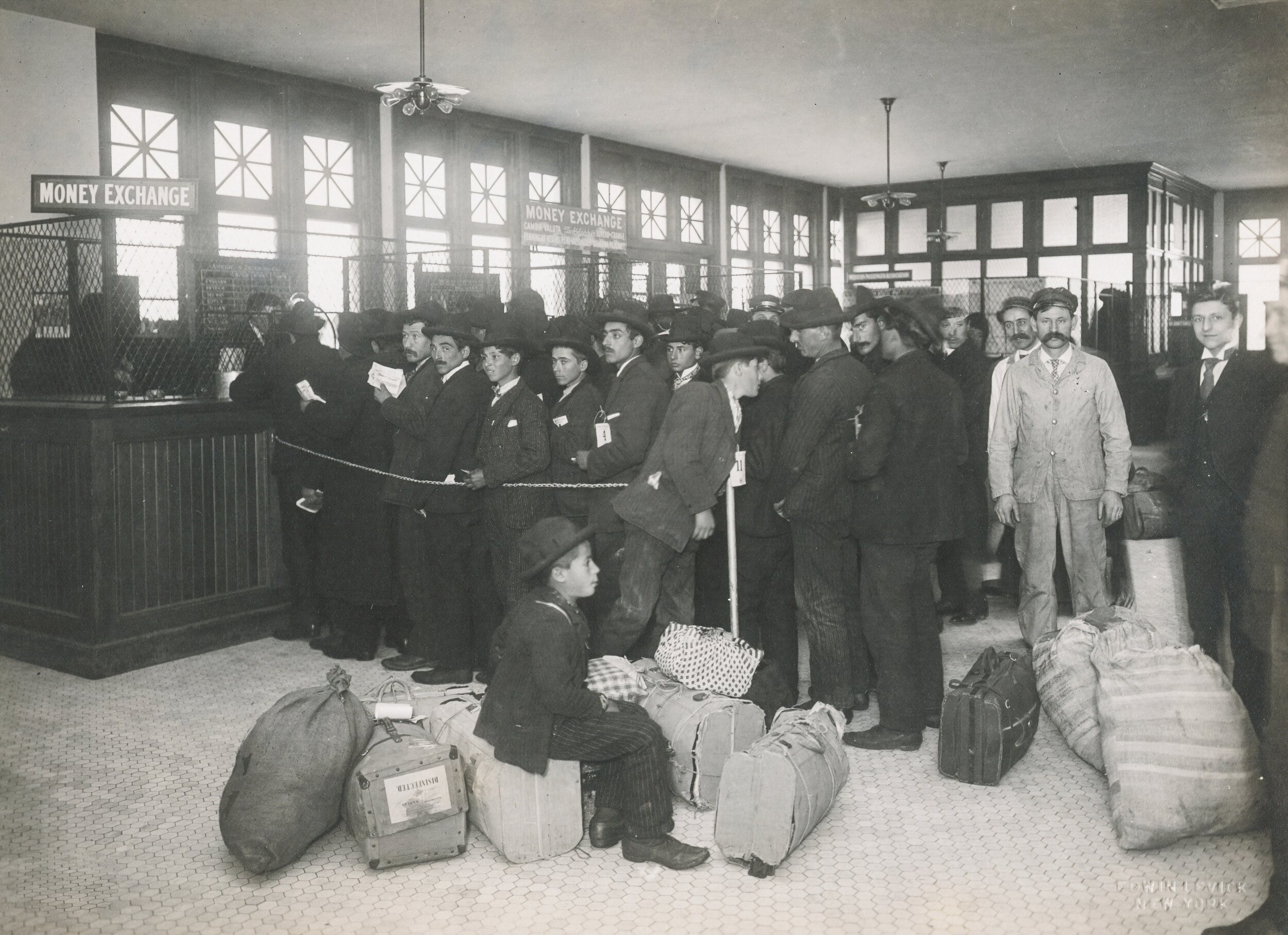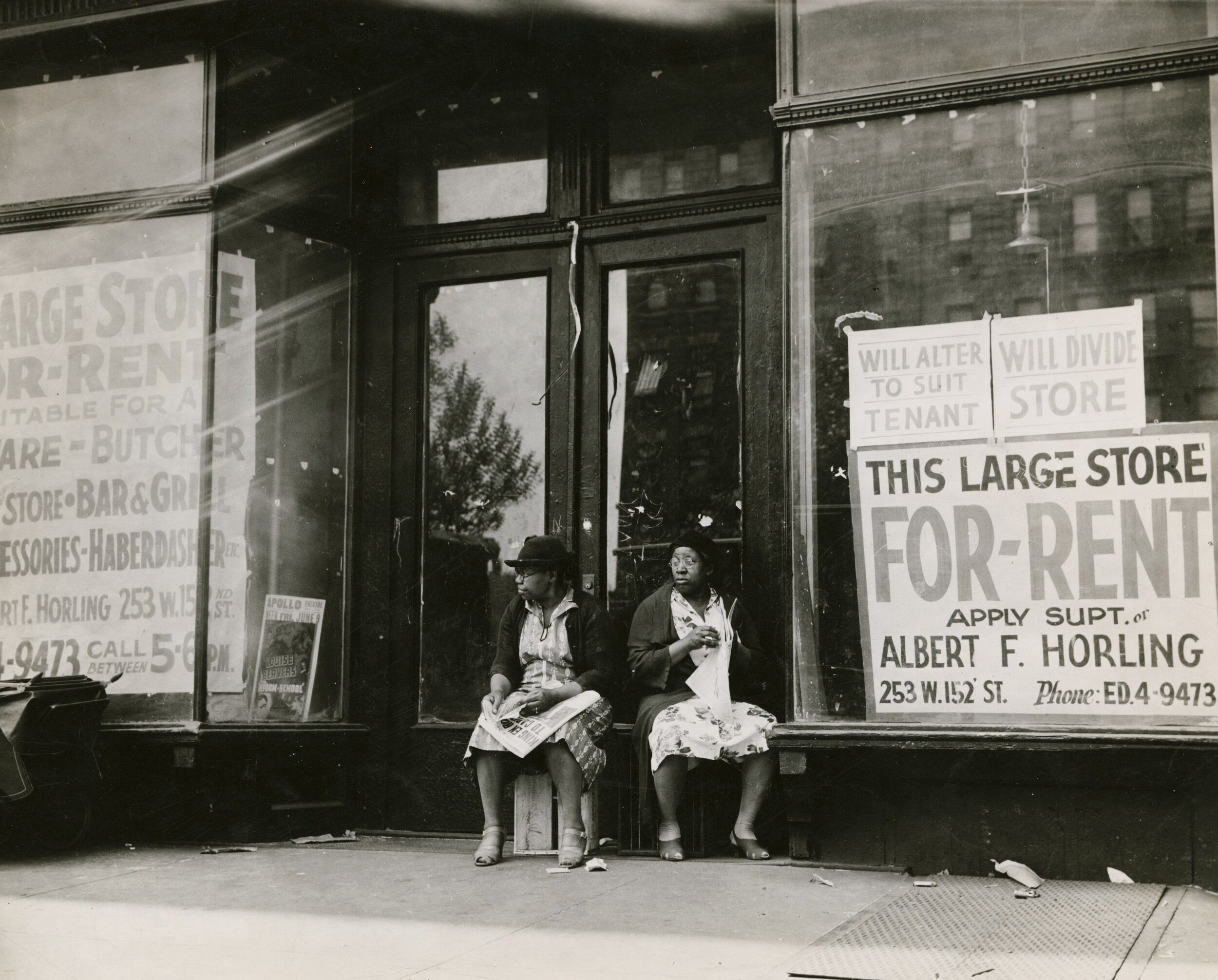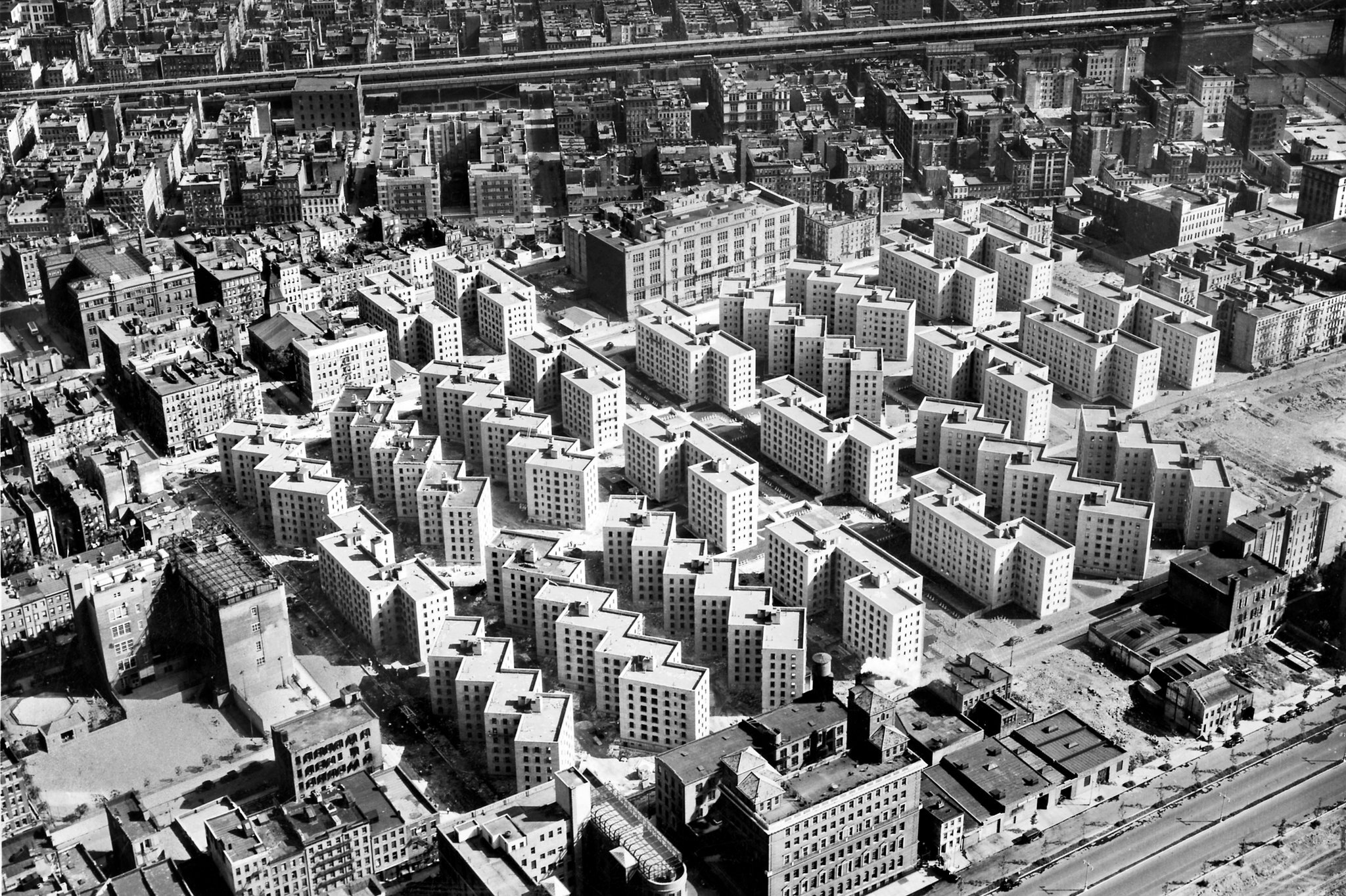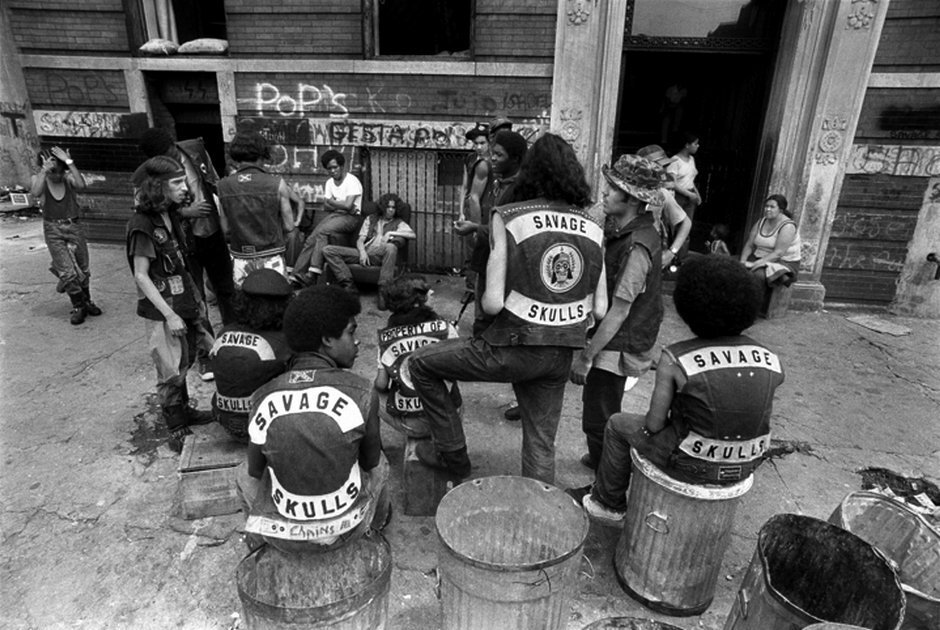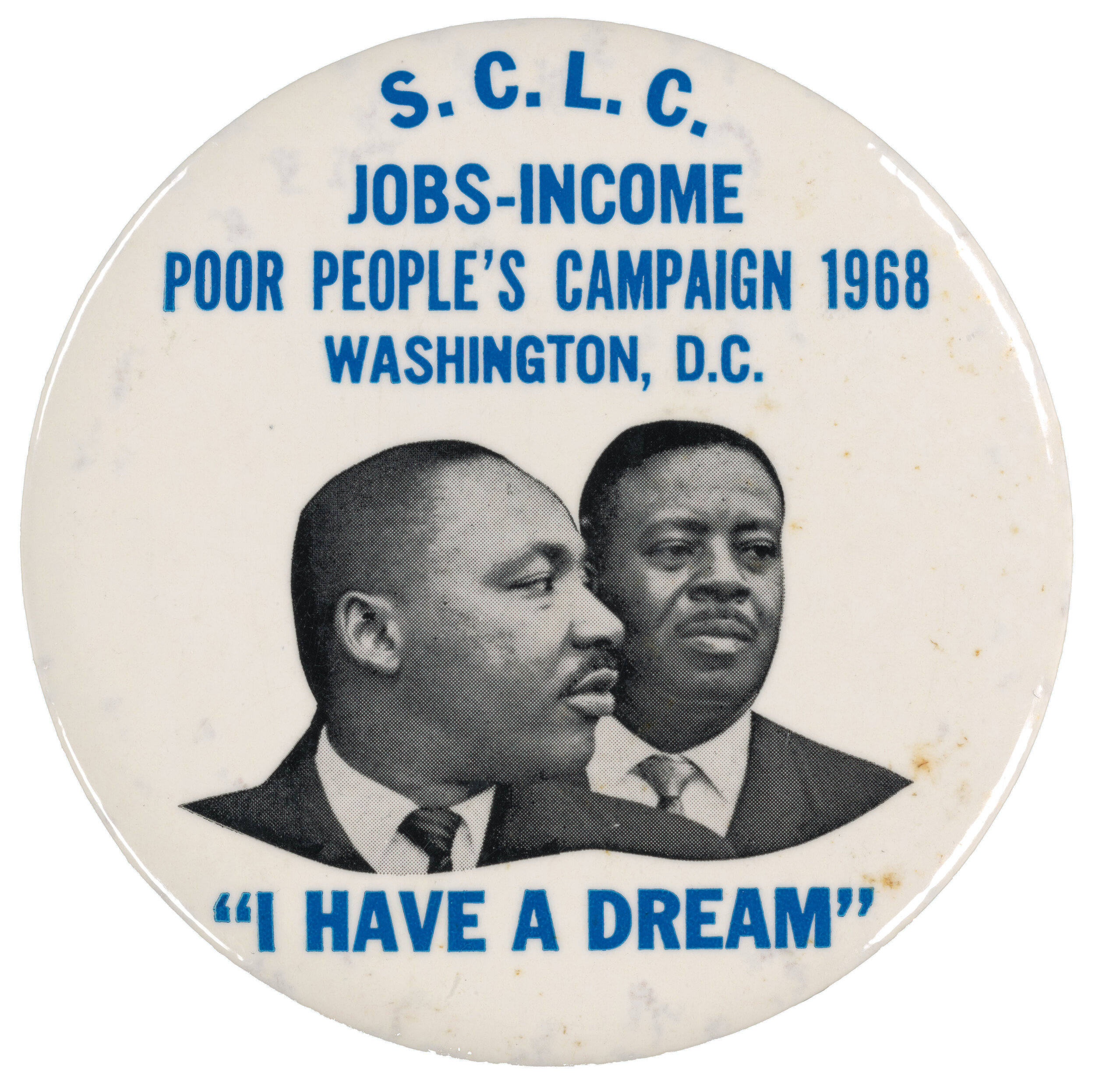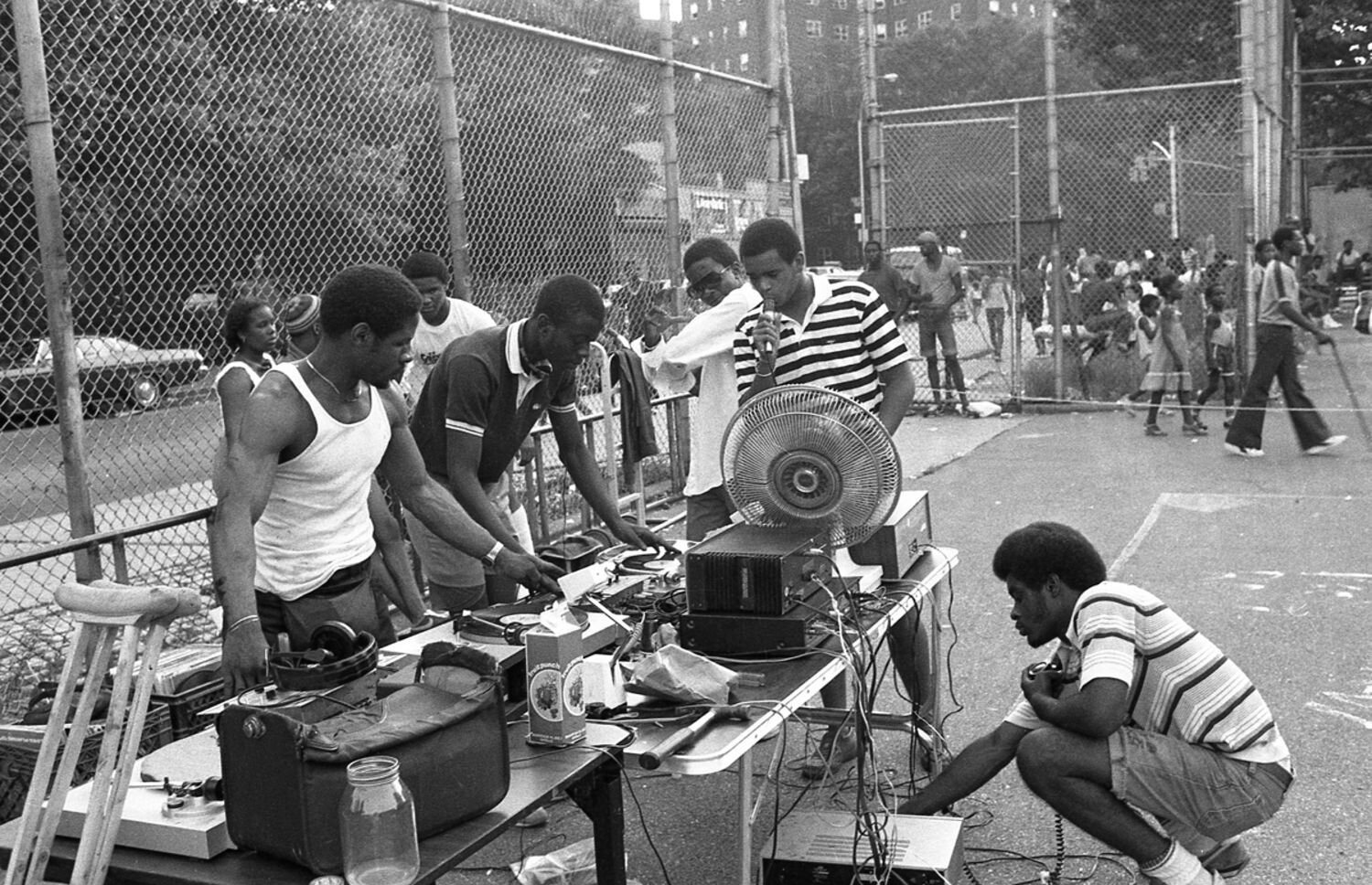The role of city planning and racism in the birth of Hip Hop culture
12 minutes read
Unless stated otherwise, all of the photos in this article are from The New York Public Library, available at Unsplash.
During the Great Depression, The National Housing Act passed, to make housing and home mortgages more affordable. It improved living standards for many Americans. Many that were white. Black communities were considered to be an "adverse influence" on property values. Agencies were declining mortgages to people in areas that were not "racially homogeneous". This created an unfair wealth accumulation that still influences the opportunities for people of colour today.
That is just one of many examples of institutional racism. The collective failure of an organisation (in this case, a bank) to provide an appropriate and professional service (mortgage) to people because of their colour, culture, or ethnic origin. Being a white woman from Eastern Europe, it was tough for me to grasp the magnitude of the Black Lives Matter movement. To ease the overwhelming amount of new information and feelings, I decided to do research at my own speed. At the end of this article, I provide a list of movies, articles and books that you can start with if you want to educate yourself on this topic.
I would like to add my two cents (more like Guarani two cents though) to these conversations by revisiting my dissertation. For two semesters, I examined the relationship between the spacial qualities of the neighbourhoods and the birth of subcultures. As the main point of reference, I used the Bronx and Hip Hop culture.
I was a little worried that this piece was a bit late. Unfortunately, the topic will be relevant for quite a while. The conversations should not stop until changes are made. So here is my unrushed piece about institutionalised racism, Hip Hop and the power of city planning.
Rather than going too deep, this is only a quick overview that could serve as a starting point if this topic interests you. All references mentioned and used for research are linked at the very end.
A brief history of city planning
The most radical change in the nature of cities comes with the industrial age. People were no longer needed on farms, so they started seeking jobs at factories in the cities. Then the colonisation of America and Australasia happens, and the percentage of city people worldwide grew from 3% at the beginning of the 19th century to more than half of the population today.
With unpredictable growth, came unpredictable problems. Suddenly cities needed to become much safer, cleaner and more aesthetically pleasing. Not enough houses and more and more cars motivated people to start researching alternative models of living and city planning. Decentralisation (building away from centres) was not an ideal solution anymore. Instead, existing residential areas had to be intensified to house more people on the same soil.
Le Corbusier became one of the pioneers of this concept. He accepted the loss of the individualism of each building at the expense of creating whole districts. Ideas of his early projects (1920') were influencing city planners all around the world, mostly after the Second World War.
1910 - Immigrants at Ellis Island
New York grid plan and housing crises
New York, thanks to its international influence as capital of *insert almost anything*, also set up the trends for city planning across the US. Until the beginning of the 19th century, Manhattan was just a few randomly placed hills, small rivers, farms and modest houses.
* Fun Interesting fact: The word Manhattan itself derives from the word Manna-hata; translated as "island of many hills" from the Lenape language.*
It was inevitable to give order to the streets. In 1811, authorities presented a design of a consistent grid plan as we know it today. Some scholars criticised the grid as distrust of nature made to address god's eyes instead of human's. Others say it is the most courageous act of prediction in Western civilisation. Even though it took about 60 years to build, it created around 2000 identical blocks anticipating a future city for more than a million people. Little did they know that their estimates to house half a million by the end of 19th century was off by no less than 300 000 residents. Authorities turned to the new urban models proposed by the modern movement. They adapted The Tower in the Park model to NY and created Projects (tower-shaped affordable housing blocks). Another highly segregative initiative, in which some were only for white people (Williamsburg) and others for black (Harlem, Bronx).
This created a gap between the parts, giving the Bronx and Harlem a developmental disadvantage. Middle and upper-class families moved out, while Hispanic and African American residents replaced Jewish neighbourhoods in the south and west. No longer meeting middle-class expectations, these areas were slowly becoming poorer.
1891 - Construction of the cable road on Broadway
What happens when one person has too much political power
Robert Moses. Chief planner, highway builder and city construction coordinator, executed all of the major developments in the area. He is one of the most important influences on what NYC looks like today. As a result of this unlimited power, the city became divided by income and race by prioritising the development of the middle class while ignoring the poor. One of the largest projects was the Cross Bronx Expressway which started construction in 1959. It cut through the middle of one of the most heavily populated areas in the Bronx that housed mainly working-class residents. After the beginning of the construction, all of the local businesses and factories were relocated. Creating unbearable living conditions, whole middle-class communities continued to move away. Cutbacks in fire, police and sanitation services... The value of housing rapidly decreasing... By 1975, there were more than thirteen thousand fires in a three thousand hectare radius. These were able to earn more than 10 million in insurance money for the landlords while leaving more than ten thousand people homeless.
Harlem Streets
Enter psychology
The replacement of deteriorating and poorly planned areas was happening all across the US. Unfortunately, relocation of the residents was a crisis with the potential of danger to mental health.
"Grieving for a lost home" written in 1963 by psychologist Marc Fried was one of the earliest and most influential essays justifying the impact of relocation on the lives of the working-class population. Fried interviewed approximately 600 residents from Boston's West End that were being rehoused over two years of their pre-location and post-relocation experience. Fried was focusing on the firm and positive attachments of the residents to the former slum residential area and comparing the reactions of its demolition to the characteristics of expressions of grief.
The survey showed that 54% of women and 46% of men reported long term severely depressed reactions. He argued that it was mainly because the daily routines, familiar places and relationships were destroyed. This caused the loss of spatial identity and group identity that was extremely important to lower class neighbourhood. The study also showed that the middle class were not as influenced by this. The higher the status of the residents, the smaller the grief. This is because they don't treat the streets as an extension of their homes. But for some cultures, commonality with other people is essential for a meaningful social function.
1935 - Harlem Tenement
Enter Jane Jacobs
She was a journalist and activist, criticising Robert Moses and all slum clearances and urban renewal proposals. Thanks to her efforts, we still have SOHO today, that was planned to be destroyed by Lower Manhattan Expressway. Her book, The Death and Life of Great American Cities, remains one of the most influential books in the history of American city planning. She argues that the primary function of the streets is not only to provide solutions to the circulation of people but the feeling of safety and security. This is not achieved by the police presence, but the unconscious network of voluntary controls between the residents. If this natural surveillance collapses, no amount of police can enforce civilisation. These rules of engagement create a public identity based on mutual trust that every neighbourhood needs.
Basically, if your child is playing outside and you can see them from a window, you both feel safer. And if you can't see the child, your friend from 5 houses down the street can. And you know her and trust her because you go to the same park, school and church together. The second your child is harassed or falls down from a tree, the neighbour is there to help and lets you know.
In the case of high rise buildings, in which a sense of security is absent from the area, families tend to stay inside their apartments. Communities don't form, everyone becomes a stranger and possible danger. Safety disappears. The perfect environment for crime, search for identity and territoriality. This gave a lot of freedom to children and youth not being under the sight of adults. In 1959 the New York Times reported that the worst adolescent outbreak of gangs was designated as having occurred in a park.
Those parks that were designed to keep the kids safe, away from traffic. Unfortunately, with no adult in sight.
The Vladeck Houses, built in 1940 - Photo property of Arnold & Kellogg
Photo property of Jean Pierre Laffont
Photo property of Stephen Salmieri
Gangs and the reasons for joining
When the system and police let people down, it is natural that members created a network in which they provided protection for each other. Most common reasons for forming or joining a gang are disorganisation of the family, school or public safety. The rise in crime was not just restricted to the South Bronx. Gangs have been present in America for centuries but became an integral part of New York City's streets in the early 1940s. The sixties became a time of worldwide social and cultural reckoning.
Multicultural movements demanding change were spread throughout the whole of America. Unfortunately towards the end of the decade, hope disappeared with the death of several important public figures (i.e. assassination of Martin Luther King Jr.). The era suddenly gave rise to violent seventies. From 1960 to 1971 the number of homicides in the South Bronx quadrupled.
In December 1971, Cornell "Black Benjy" Benjamin, one of the members was trying to negotiate peace with a few gangs during a street fight. He was reported dead the day after. The killing of an unarmed gang member asking for peace was a call for what could have been the biggest war in South Bronx history. Benjy's mother was pleading for peace. After that, the Ghetto Brothers organised a summit to discuss the situation with other gang members. It was on December 7th when more than a hundred gang leaders signed a detailed agreement. Part of the deal was losing the restriction on walking through other gangs territory. This played a crucial role in the mixture of residents allowing people to attend various parties in all of the neighbourhoods. It was the end of the near-apocalyptic level of gang violence in New York.
Photo property of Mr Alejandro Olivera/ Saboteur Media
South Bronx Park Jam, 1984. Photo property of Mr Henry Chalfant
The birth of Hip Hop culture
A lot of music historians believe that this establishment of new rules made it possible for everyone to be part of the infamous party by Clive "DJ Kool Herc" Campbell. Which became one of the pivotal moments in Hip Hop history.
It is only natural that art also became the immediate reaction of the current situation in South Bronx. Through a visual and oral critique of the environment, hip hop served as the most honest and accurate way of expression. Rap enabled the youth to have a voice in the local communities. Now the songs and their lyrics are providing us with a better understanding of the context of those times. Grandmaster Flash in one of the most iconic rap songs "The Message" describes a totally different environment that Robert Moses thought he was providing.
DJing, MCing, graffiti, and breaking were used as a way to channel the energy of the youth in a more positive way. And the rest is a story well known. A movement that started as a way to create awareness of socio-political issues became an expression of hope for the future and an effort to reclaim public spaces.
All those parks and enclosed gardens finally found their use after years of fear.
DJing, MCing, graffiti, and breaking were used as a way to channel the energy of the youth in a more positive way. And the rest is a story well known. A movement that started as a way to create awareness of socio-political issues became an expression of hope for the future and an effort to reclaim public spaces.
All those parks and enclosed gardens finally found their use after years of fear.
We all have roles to play in ending racism. I am continuously unlearning the things I was taught and researching what I was not aware of. Becoming more conscious of prejudice and stereotypization. Starting conversations with friends and family members. Asking myself more in-depth questions about what are people dealing with that leads to their actions.
Learning. Empathy.
I know it is overwhelming to start when so many things are wrong. That is why this article comes 6 months after the murder of George Floyd. I started with art and culture because more often than not, subcultures form as a reaction to political situations. Grime has evolved as a response to government neglect. Basquiat used his everyday surroundings to depicts racial inequality and representation. Kendrick Lamar, James Brown, Lauryn Hill...
Just start somewhere…
Watch & Reading list
MOVIES:
Rubble Kings, dir. by Shan Nicholson
Classics: The Warriors, Beat Street, Wild Style, Kidulthood, Dogtown & Z-boys, Freshest Kids, Style Wars, Flying Cut Sleeves, From Mambo to Hip-Hop
VIDEOS:
James Dator Lecture: Racism in America: A History in Three Acts
James Baldwin: Pin Drop Speech 1965
ARTICLES:
Interview with Shan Nicholson - director of Rubble Kings
New York Times: The Rise and Fall of New York
Public Housing: An Oral History
Cuepoint: Gangs of New York: Scenes from the Birth of Hip-Hop
New York Times: What does a traffic jam in Atlanta have to do with segregation?
Washington post: A crusade to defeat the legacy of highways rammed through poor neighborhoods
BOOKS:
Can't stop won't stop: A history of the hip-hop generation by Jeff Chang
The City of to-Morrow and Its Planning by Le Corbusier
The death and life of great American cities by Jane Jacobs
The Conscience of the Eye: The Design and Social Life of Cities by Richard Sennett
The Power Broker: Robert Moses and the Fall of New York by Robert Caro
For those that made it all the way here, this is one of the first soul hits to include both a political message and sampling of the street sounds.
Still relevant to this day.


